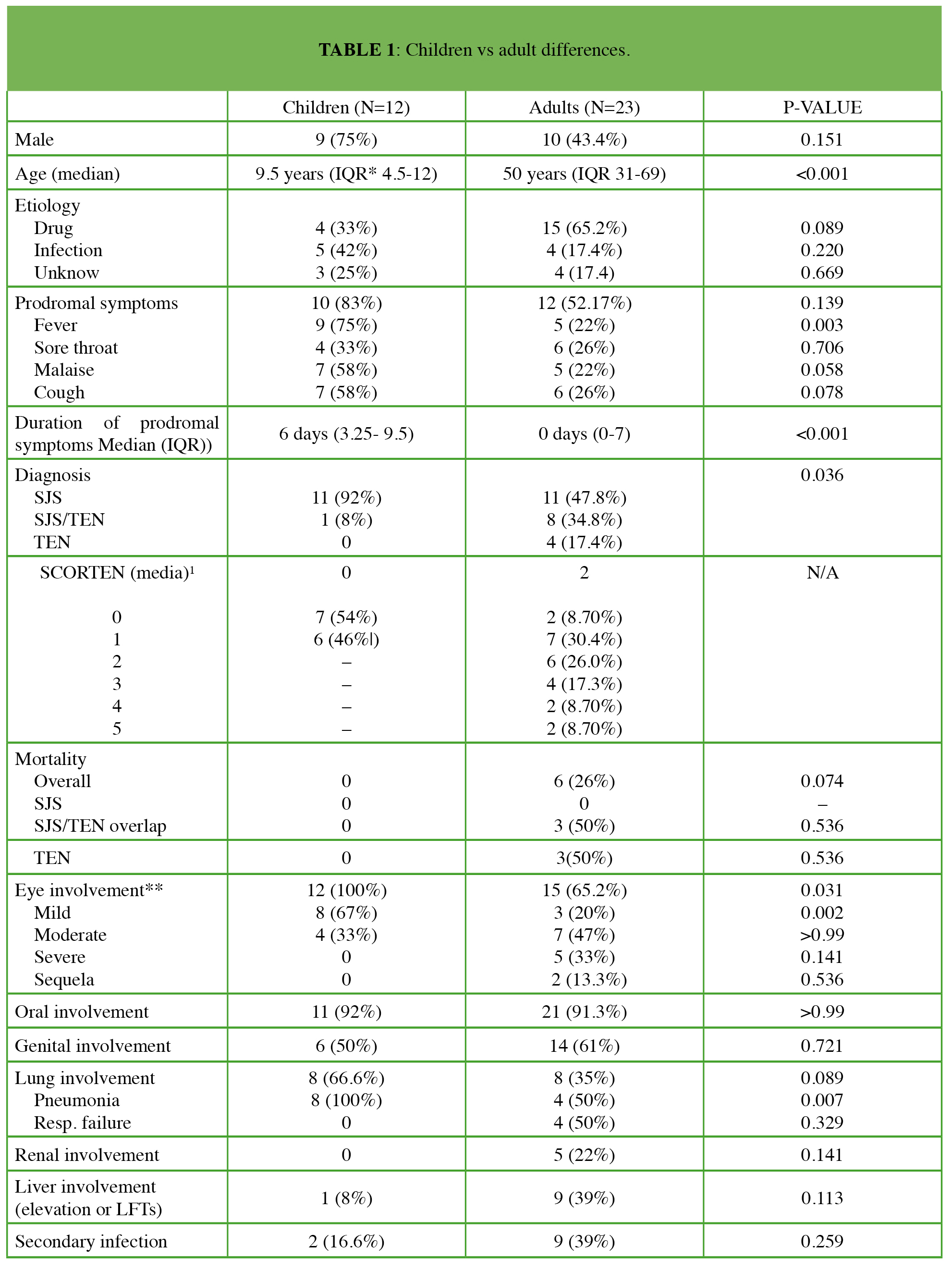Stevens-Johnson syndrome and toxic epidermal necrolysis. A comparison of outcomes between adults and children.

Downloads
DOI:
https://doi.org/10.26326/2281-9649.29.4.2033How to Cite
Abstract
This study is aimed to compare the clinical features, triggers, comorbidities and outcome of children and adults with a diagnosis of Stevens-Johnson syndrome (SJS) and toxic epidermal necrolysis (TEN) from one institution. It is a retrospective cohort study of patients with diagnosis of SJS, SJS/TEN overlap or TEN seen at our institution from April 2002 to April 2016. Clinical characteristics and outcomes between adults and children were compared. 12 children and 23 adults were included in the study. Diagnosis of SJS was more common in children than in adults (92% vs 48%) while SJS/TEN overlap and TEN were seen more in adults (8% vs 52%). Drugs (anticonvulsants) were the most common trigger in adults (65%), while Mycoplasma pneumoniae was the main culprit in children (42%). Mucosal involvement overall was present similarly in both groups, but the severity was higher in adults. Systemic involvement, secondary infection and complications were also more often seen in adults. The mean hospital stay in adults was 17 days vs 8.3 days in children. No deaths were observed in children vs 26% of mortality in the adult group. In conclusion morbidity and mortality seen in patients with SJS or TEN have a greater severity in adults than children.
